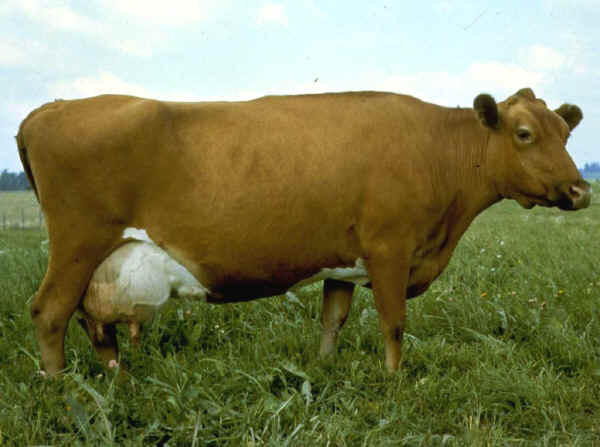Type the name of the breed you're looking for below
[wpdreams_ajaxsearchlite] Don't see the breed your're looking for? Click here and let us know!
Finncattle
| Place of Origin | Finland |
| Origin | Finncattle refers to three closely related cattle breeds of Finnish origin. The three Finncattle breeds are the Eastern Finncattle, the Northern Finncattle and the Western Finncattle. The Western breed has the highest milk production and is the most prevalent of the three with circa 5.000 heads in Finland in 2006. Both the Eastern and Northern breeds are endangered with circa 300 heads each. The Finncattle breeds were originally established as separate breeds, in the turn of the 20th century, but with the emerging and growing popularity of more modern, imported dairy breeds, their numbers declined greatly, and the stud books were merged in the latter half of the 20th century, and the Western breed was selected as the official, desirable type for the new combined Finncattle breed. However, the three types remained distinct, and are considered separate breeds today, despite the shared studbook. The Finnish celebrity and artist Miina Äkkijyrkkä is known as a spokesman for Finncattle, and especially as a breeder and great afficiando of the Eastern Finncattle. |
| Purpose | Finncattle is most often kept for dairy production, and some animals are found in petting zoos and as pets. |
| Appearance | The Finncattle breeds are of small size, however they differ in appearance and production levels. The Western Finncattle is red, and the largest of the three breeds. The North Finnish cattle variety are white, the West Finnish are red, while the East Finnish are both white and red. |
| Horns | Naturally polled (hornless) |
| Other Considerations | Finncattle has adapted to the Finnish climate and conditions farther than any other cattle breeds. It can successfully be kept on forest pasture. Finncattle tends to be long-living and have good fertility. The fat and protein contents of the milk are higher than those of the other dairy breeds in Finland. However, the milk production levels are significantly lower than in other breeds. Moreover, the typically curious and willful nature of the Finncattle animals, and the breeds' tendency to fatten rather than milk more when fed more may cause problems to farmers used to further-bred dairy breeds. There are many problems related to breeding Finncattle. The breeds were established relatively late, and even after the founding of the studbooks the breeding has been done in small scale. After World War II, foreign, modern dairy cattle breeds were imported to Finland in growing numbers, and the number of Finncattle diminished quickly: in 1960 there still were almost 60.000 Finncattle cows recorded, ten years later 7.000, and in 2005 as little as 2.500. In addition to the small numbers, the breeding has been affected by the fact that after the war there were many highly popular bulls; for example, a Western Finncattle animal that doesn't have the 1960s bull Opari SSS 13088 in its pedigree is a rare find. Inbreeding is another great problem with the breeds, since private cattle breeders have had the tendency to strongly favour the few best-rated bulls. Western Finncattle can be somehow bred for quality and production, but for the time being, the breeding of the endangered Eastern and Northern breeds is, by necessity, concentrated on preserving and broadening the gene pools. |



